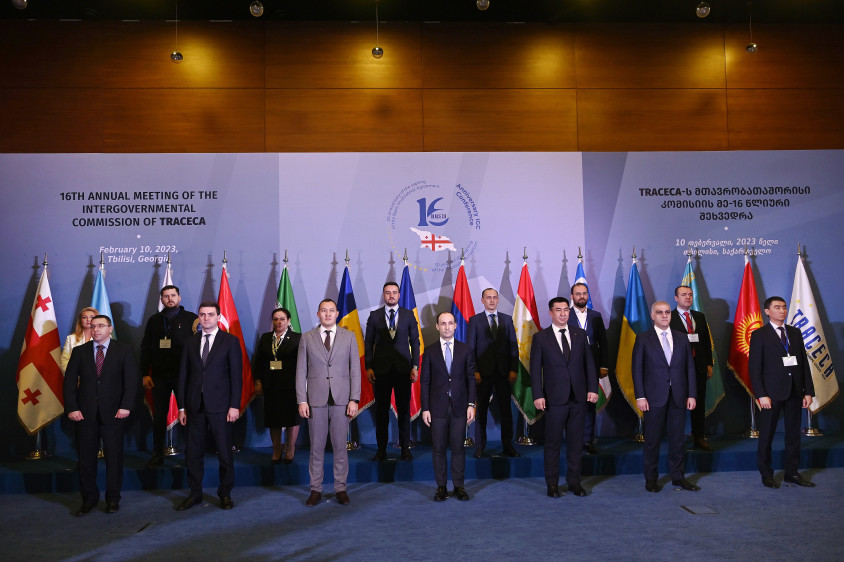Until 2007, 14 countries were benefiting from the EU-funded TRACECA programme.
Initially, 8 countries were parties to TRACECA: Azerbaijan, Armenia, Georgia, Kazakhstan, Kyrgyzstan, Uzbekistan, Tajikistan and Turkmenistan.
All these countries became TRACECA members at the Brussels Conference, which was the foundation of TRACECA in 1993.
Seeing the success of the TRACECA program from 1996 to 1998, Moldova and Ukraine applied to become a member of TRACECA with the approval of the European Commission.
In 2009, Iran signed the MLA and became a member of TRACECA.
Finally, Turkmenistan is also trying to transition from observer status to membership status as a state party to the MLA, and the internal approval process continues.
Click for the activities of the member countries in TRACECA.

TRACECA IGC, Tbilisi
This includes senior government officials or their authorized representatives by MLA members, usually Deputy Prime Ministers responsible for transport, Ministries of Transport and/or Foreign Affairs. Officials representing member countries at annual IGC meetings are called National Commission Presidents.
TRACECA IGC;
- According to the rotation system, senior government representatives of the countries that are members of the MLA hold the Presidency,
- Ordinary meetings are held once a year, but also in extraordinary situations to take urgent decisions,
- Guiding, guiding and making decisions on annual action plans, MLA changes, working group issues, recommendations and other TRACECA related issues,
- PS IGC elects TRACECA General Secretary,
- The majority takes its decisions with the approval of all parties in accordance with the basic decisions.
Today, the TRACECA program covers 13 countries, 5 of Europe, 3 of the Caucasus and 5 of Central Asia, with different histories, cultures, languages, political and economic systems. With the support of TRACECA's organizational development and institutionalization, the program is developing as an empowerable tool for facilitating trade and integrating the economies of TRACECA countries with the world market.
Click for TRACECA IGC Meetings
Click for TRACECA National Commission Presidents
- It is carried out by the Secretary General ;
- Develops management services for IGC and its structures, eg. Organizing and facilitating meetings of IGC and working groups;
- Creates TRACECA archive;
- Creates traffic and project databases;
- Provides technical consultancy service and information and is responsible for results;
- Creates protocols;
- Provides cooperation, programming and transformation businesses of TRACECA projects;
- Follows, develops and promotes IGC decisions, MLA objectives;
